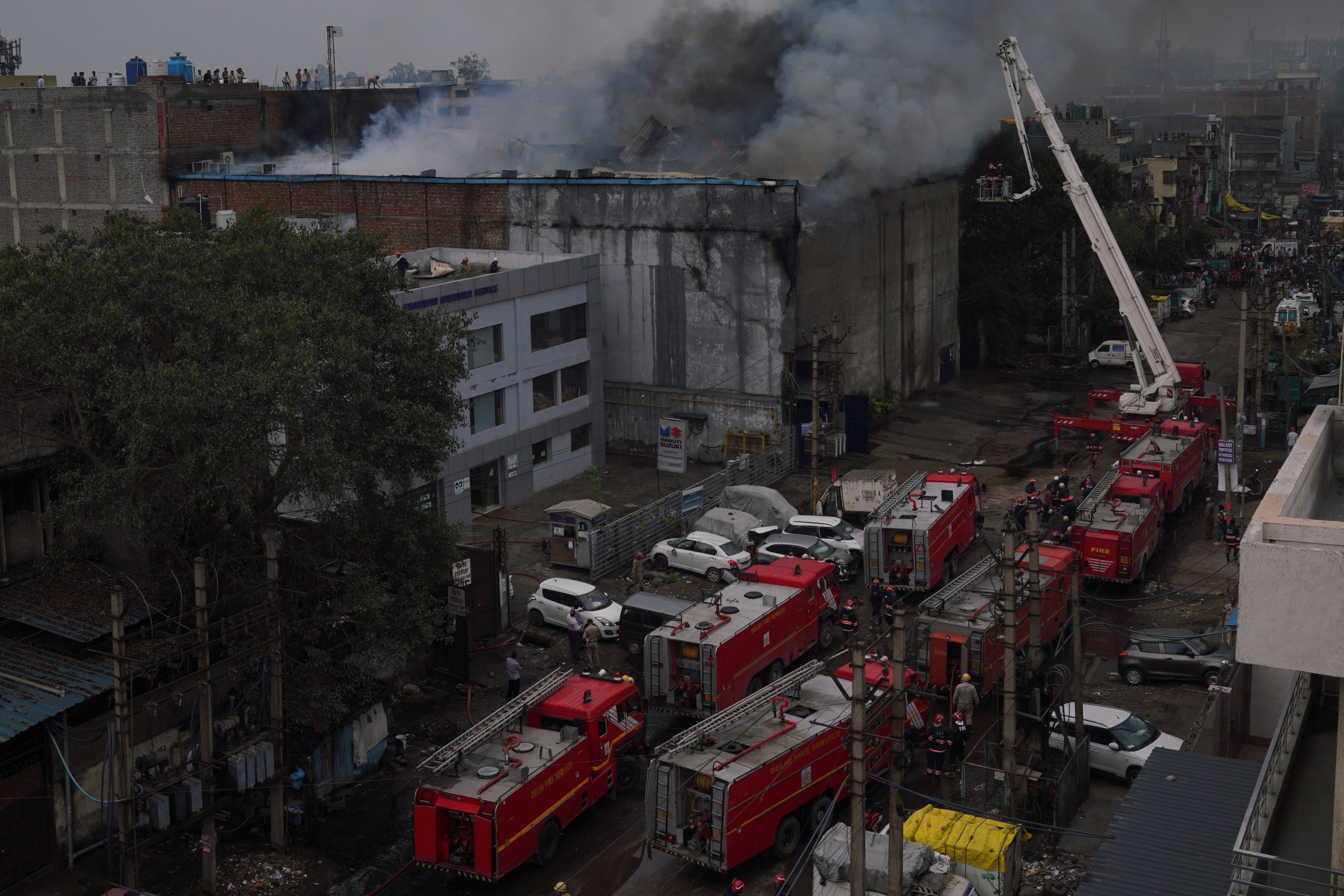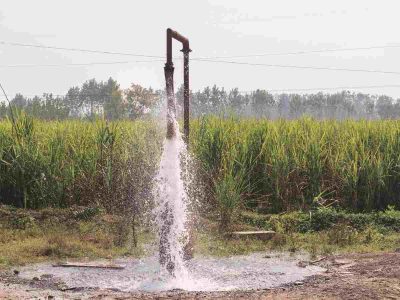Data sourced from the Delhi Fire Services (DFS) reveal that the most number of fire incidents in the national capital since the beginning of 2023 happened in its western districts.
According to the data, the West Zone, which includes the highly industrialised districts of North West and West Delhi, recorded 9,190 emergency calls during the course of the year.
The neighbourhood of Janakpuri noticed most number of emergency calls at 1,444.
Delhi’s areas were demarcated into various zones, namely, the New Delhi Zone (comprising East and Central Districts), the South Zone (comprising South and South West Districts) and the West Zone (comprising the North West and West Districts). These emergency calls were recorded till January 31.
Of these emergency calls, 340 were industrial fire-related calls.
How susceptible to fire is Delhi?
Atul Garg, the DFS Chief, informed Patriot that most of these calls were made from western Delhi owing to the presence of prominent industrial areas.
“Areas like Rohini and Wazirpur have historically recorded the most number of fire incidents, and even the most number of phone calls,” he said.
According to the data, Rohini area recorded 2,214 emergency calls during the course of the year, while Wazirpur area recorded 1,295 incidents. The former comprises four neighbourhoods while the latter includes only two neighbourhoods.
On February 16, an unregistered paint factory in North Delhi’s Alipur, paid a hefty price with the death of 11 workers.
“We think that there are many others who had died in the fire,” said Harpal Singh, the Alipur supervisor of the All India Central Council of Trade Unions (AICCTU).

It has been reported that apart from being unregistered, the factory also lacked a No Objection Certificate (NOC) from the DFS.
“To get an NOC, they would have to first be registered with the Municipal Corporation of Delhi (MCD). They will first make sure that everything adheres to labour laws and normal industrial norms. After that they ask us to conduct our inspection. We do not act independently unless we are provided information,” said Garg.
The DFS chief elucidated that the NOC is essentially presented to any factory which gets the green light from the MCD. Following this, officials from the department inspect the building or enclosure to check if every safety precaution is in place — the presence of windows, multiple exits, fire-fighting mechanisms, and ample ceiling space.
Wazirpur’s illegal factories thrive as authorities look the other way
Thus, these are the exact norms that Wazirpur’s steel manufacturing illegal factories in its residential areas flout with granted ease.
Tarakeshwar Manjhi, 41, a factory worker in Wazirpur’s Industrial Area, highlighted that even factories in industrial areas function with impunity without any fire safety measures in place.

“There are no fire safety measures in place. We just have one gate where we enter and exit from. We don’t have fire extinguishers either but we do have one bucket of sand if anything happens,” he said.
On the other hand, Wazirpur Village, which falls under the jurisdiction of Ashok Vihar Police Station, is host to numerous makeshift factories catering to the manufacture of steel utensils and other such appliances in their residences. To put matters into perspective, Wazirpur Industrial Area is renowned as one of the biggest steel utensil manufacturing units in India, and the village is attempting to be an extension of the same.
Numerous unmarked, half-shuttered, and sometimes fully-shuttered units function with glimmers of blowtorches, while another functions from a basement with its only link to the outside world through the opening of an exhaust fan.
In front of these factories, a bouncer hovers around checking for any person who may be deemed suspicious.
According to the Delhi Master Plan 2021, only 28 kinds of domestic, small-scale “factories” can operate out of residential areas.
“Factories which mostly deal with incense making, papad-making, assembly and repair of electronics, alongside a few other small industries are permitted to function from these residential areas,” said KD Verma, an MCD Additional Deputy Commissioner in the Factory Licensing Department.
Verma also highlighted that the checks and balances in place are enough to highlight the factories which require identification.
“There are two kinds of industries that we do not permit: Polluting industries like chemical manufacturing units and paint manufacturing units, their location of operation does not matter [and they are not allowed in the National Capital Territory of Delhi]. We also do not permit factories that work out of residential areas,” he said.
He also highlighted that some factories do fall under the radar of both the police and the zonal in-charges.
According to RP Singh, the leader of North District’s AICCTU, there are over 5,000 such illegal factories spread across the district.
“We have identified these factories across multiple areas like Wazirpur Village, Mangolpuri, Siraspur, and Jahangirpuri. None of them have been registered and function from residential areas,” he added.
Worker rights at illegal factories
The said factories are thus exempt from any form of adherence to formal checks and balances which have been put forward by the Occupational Safety Health and Working Conditions (OSHWC) Code 2020. The code applies to factories or organisations which have over 20 workers (with power aid supply) or over 40 workers (without power aid supply).
To put matters into perspective, the OSHWC Code provides for sufficient protection for workers engaged in hazardous activities, employment benefits, timely work hours, and appropriate identification of all workers, among other aspects. Owing to their illegal nature, none of the factories had to adhere to these doctrines.
 Sachin Kumar Manjhi, a 21-year-old worker at one of the many utensil manufacturing factories in a residential area, has been victim of a lack of safety provisions.
Sachin Kumar Manjhi, a 21-year-old worker at one of the many utensil manufacturing factories in a residential area, has been victim of a lack of safety provisions.
Manjhi narrated, “It was a normal workday at the factory. I was on duty at the powder-making machine but during the process of dumping the required items in my hand came in the way, slicing through two of my fingers in the process.”
The 21-year-old was not provided with any protective gear much like other workers in the factory, and as compensation, he was given Rs 3,000. He was later fired.
Manjhi stays with his father, Tarakeshwar, in the national capital in a makeshift house along Wazirpur’s macchli mandi (fish market). His father also narrated how the case was dropped since they could never prove his employment.

“None of the workers are provided with any identity card but it’s out of compulsion that we have to work either way,” he said.
According to Singh of AICCTU, such lapses in safety are not unheard of in these areas. “Recently, we received two complaints of workers dying while working in the factories. One was crushed to death while another was electrocuted. Both complaints were filed with the police but nothing has come about since we cannot prove their employment,” he said.
How many illegal factories are there in the national capital?
In 2018, Delhi State Industrial and Infrastructure Development Corporation (DSIIDC) had identified and listed 51,837 factories in the national capital which were operating from “non-conforming” areas.
The MCD has taken action on 20,000 of them according to news reports, while 30,000 remain functional.
In October 2023 itself, the National Green Tribunal (NGT) ordered the MCD and the Environment department of Delhi to shut down every functioning factory in non-conforming/residential areas.
The NGT reminded authorities of its previous order from 2004, wherein the court had observed that any illegal factory formulated post-1990 was to be shut down. In the same month, the NGT had enquired about reports against an illegal dyeing unit in the city with the Delhi Pollution Control Committee (DPCC).
In the past five years, reported incidents of emergency calls in these areas have reduced ever so slightly, yet these factories remain as Delhi’s timebombs, as the National Green Tribunal’s (NGT) directives remain unheeded as well.
No wonder, the national capital’s West District remains a major victim while also being a culprit to its own being.





